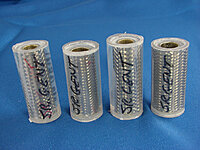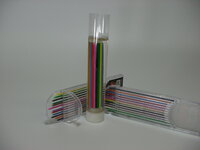socdad
Member
I've been casting feathers, watch parts & labels for several years using polyester resin. I changed to vertical casting a couple of years age and have run into a problem. A few blanks (several) have come out badly cracked. Some of the time it is one blank out of a batch of a dz. or so, lately it has been the entire batch. I warm the resin to 72 deg or so / no humidity to speak of / use 3-4 drops of Mekp per oz. I spoke with the folks at US Composites & they keep telling me the room if too hot / cold … or I'm using too much mold release (I'm not using any)
Any suggestions will be greatly appreciated …
Any suggestions will be greatly appreciated …


